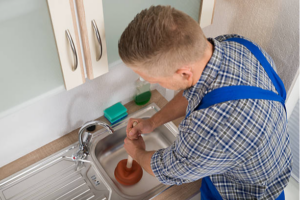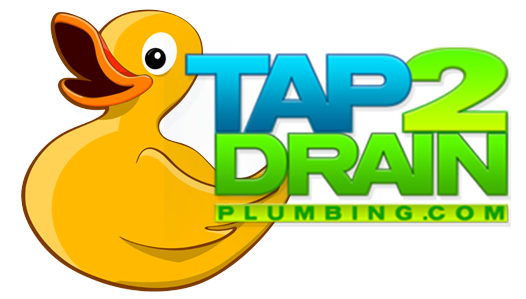
Have you ever had a kitchen sink clogged? The kitchen sink is one of the most heavily used fixtures in the home, and as a result, it is also one of the most likely to become clogged. A clogged sink can be a major inconvenience, making it difficult to wash dishes or prepare food.
Fortunately, there are a number of ways to unclog a kitchen sink.
Check the Garbage Disposal
When your kitchen sink is clogged, the first thing you should do is unclog it by running water through to clear any obstructions in its drain. If that doesn’t work for whatever reason (maybe because there are some stubborn pieces of food), then carefully inspect everything around where these problems arise before turning off power switches or getting rid-of expensive tools like garbage disposals completely – they may be able to get back up and running with minor repairs!
Get out the Plunger
When plunging, make sure you have at least three or four inches of water on the unclogged side and don’t forget about blocking off your other sink with a stopper! If everything goes smoothly then try clearing out any clogs by pumping up and down for 30 seconds before trying another method.
Boiling Water
When you need to unclog your drain, there are two things that can help. The first is using boiling water with a pot or teakettle and pouring it directly into the sink; this will clear most clogs on its own if done correctly (don’t forget about safety).
Here’s how to use boiling water to clear your drain:
- Place a kettle or pot of water on the stove and bring it to a rolling boil.
- While you’re waiting for the water to heat, remove as much standing water from the sink as possible, using a mug or small pot to bail out the water.
- Pour the entire kettle of water into the sink and let it sit for a couple of minutes. If the water stands in the sink without draining, the clog is still there.
- Give the water time to cool for about five minutes and then remove it by scooping out as much cooled water as possible with the mug or pot and disposing of it in another sink.
- You may need to repeat the process several times to move the clog, but this strategy often works on many types of blockages.
Clean the P-trap
Before cleaning your kitchen sink’s P-traps, it is essential first to unfasten and clear out anything stuck in the drain. This will help avoid injury from objects sharp enough for you not to be able to see them with naked eyes.
- First, place a pan or bucket underneath the drain to catch any water or debris that may fall out.
- Then, unfasten the P-trap from the drainpipe and clear out anything that is stuck.
- Finally, replace the P-trap (make sure all connections are closed tight) and run warm water through the pipes for a few minutes.
Send in the Snake
To clear a clog, firstly, ensure you have the right tools to remove it. A drain snake can be used to remove obstructions down low where other appliances cannot reach and should always come in handy when tackling plumbing problems like this!
After inserting your metal auger-like device into pipes wide enough so that no water blocks its path (you don’t want this thing popping off while being worked upon), push away any particles blocking entry points throughout by wiping them clean with some paper towels before reinserting back up top again.
Call Tap 2 Drain Plumbing
If you’re experiencing any of the problems listed above, it may be time to call in a professional. Tap 2 Drain Plumbing is here to help with all your plumbing needs – big or small.
We have experienced and licensed plumbers who are more than happy to assist you with unclogging your kitchen sink, fixing a leaky faucet, or anything else that may be plaguing your home’s plumbing system. Contact us today for a free estimate!
